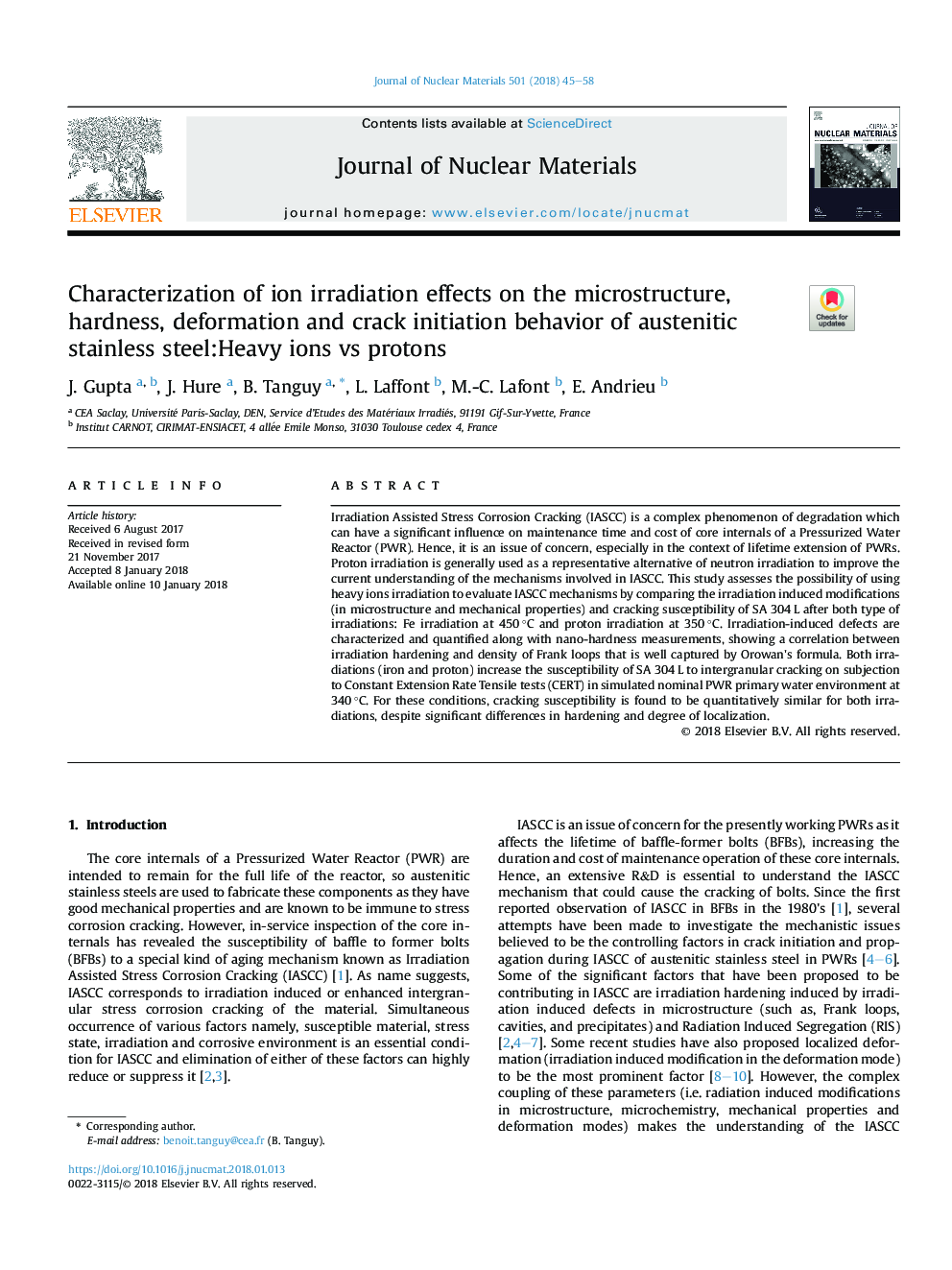| Article ID | Journal | Published Year | Pages | File Type |
|---|---|---|---|---|
| 7963353 | Journal of Nuclear Materials | 2018 | 14 Pages |
Abstract
Irradiation Assisted Stress Corrosion Cracking (IASCC) is a complex phenomenon of degradation which can have a significant influence on maintenance time and cost of core internals of a Pressurized Water Reactor (PWR). Hence, it is an issue of concern, especially in the context of lifetime extension of PWRs. Proton irradiation is generally used as a representative alternative of neutron irradiation to improve the current understanding of the mechanisms involved in IASCC. This study assesses the possibility of using heavy ions irradiation to evaluate IASCC mechanisms by comparing the irradiation induced modifications (in microstructure and mechanical properties) and cracking susceptibility of SA 304â¯L after both type of irradiations: Fe irradiation at 450â¯Â°C and proton irradiation at 350â¯Â°C. Irradiation-induced defects are characterized and quantified along with nano-hardness measurements, showing a correlation between irradiation hardening and density of Frank loops that is well captured by Orowan's formula. Both irradiations (iron and proton) increase the susceptibility of SA 304â¯L to intergranular cracking on subjection to Constant Extension Rate Tensile tests (CERT) in simulated nominal PWR primary water environment at 340â¯Â°C. For these conditions, cracking susceptibility is found to be quantitatively similar for both irradiations, despite significant differences in hardening and degree of localization.
Related Topics
Physical Sciences and Engineering
Energy
Nuclear Energy and Engineering
Authors
J. Gupta, J. Hure, B. Tanguy, L. Laffont, M.-C. Lafont, E. Andrieu,
